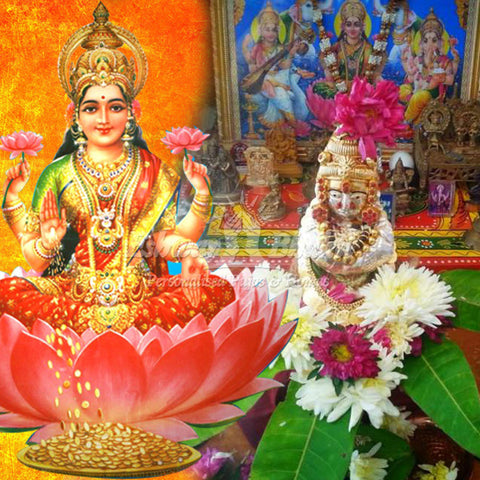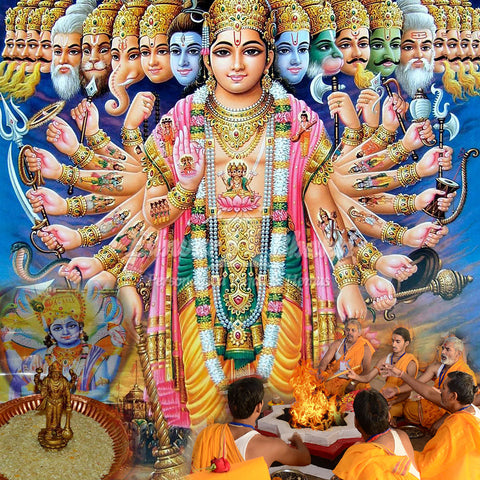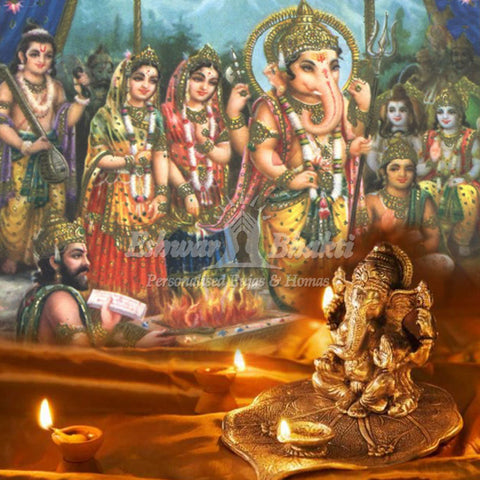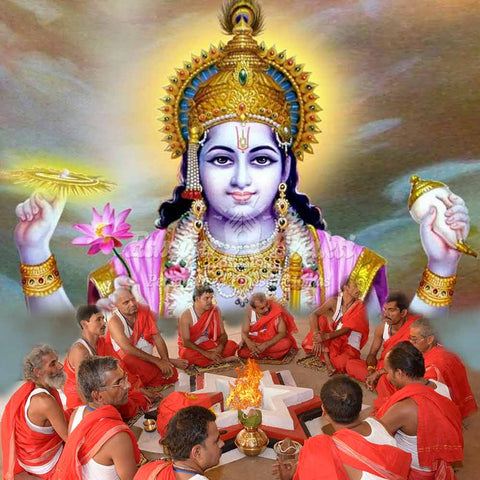What is Shankh?
 Shankh or conch is a religious symbol in Hinduism, which is associated with several myths, legends, traditions, and rituals. Shankh was one of the items that came out during the Samudra Manthan or churning of the oceans by the devas and asuras for gaining Amrit. Lord Vishnu, Goddess Lakshmi, and Lord Garuda, the god of wealth, are closely related to the myths of Shankh. Lord Vishnu's Shankh is known as Panchajanya. It is described as the same for his avatars as well, including Sri Krishna, Matsya, Varaha, Narasimha, and Kurma.
Shankh or conch is a religious symbol in Hinduism, which is associated with several myths, legends, traditions, and rituals. Shankh was one of the items that came out during the Samudra Manthan or churning of the oceans by the devas and asuras for gaining Amrit. Lord Vishnu, Goddess Lakshmi, and Lord Garuda, the god of wealth, are closely related to the myths of Shankh. Lord Vishnu's Shankh is known as Panchajanya. It is described as the same for his avatars as well, including Sri Krishna, Matsya, Varaha, Narasimha, and Kurma.
In Skanda Purana, bathing Lord Vishnu's idol with a Shankh can purify us from the sins of our seven lives. In Varsha Purana, using Dakshinavarti Shankh for bathing can free us from our sins. As per Sankha Sadma Purana, the pouring of water with a Shankh over our head in front of the image of Lord Vishnu is equivalent to taking a dip in the Holy Ganga river. Apart from these, Mahabharata and Bhagavad Gita have elaborated on the significance of Shankh. There are several religious and scientific reasons behind blowing or keeping a conch.
Significance of Shankh or Conch: Shankh has had a plethora of uses in the past centuries. Their blowing in the morning indicated the beginning of the war. In the evening, they marked the end of the day's warfare. When they were blown away after a battle, they signified victory.
Religious Significance: Shankh is a symbol of cosmic space, and its attribute is sound. The blowing of a Shankh produces vibrations of OM, which can aid us in achieving transcendence. In temples, priests blow Shankh before as well as during aarathi and pooja. However, the Shankhs used in these two situations have to be different. As per Varuna Purana, a priest can open a temple only after blowing a Shankh. Other religious benefits include -
• The blowing of the conch removes the presence of any negative energy and evil spirit in the surrounding area.
• In temples, they are used to provide Shankha Theertam or Holy Water to the devotees.
• In Tantric rituals and meditations, mudras of Shankh play a crucial role.
• A Shankh can cleanse us of our sins and fill us with positive energy.
• Being the home of Goddess Lakshmi, a Shankh can bestow fame, prosperity, and wealth.
• Its blowing can attract Lord Vishnu's vitality to us before we start our prayers.
• The frequency of Shankh is Sattva dominant, which means it can decrease the strength of evil forces.
Shankh plays a crucial role in Hinduism. They have a specific place in traditional rituals as well as culture. Many keep Shankh in their houses to ward off evil forces and to improve prosperity, wealth, as well as happiness.
In Mahabharatha, apart from Lord Krishna, others also had different Shankhs in their possession. Arjuna's Shankh is known as Devdatta; Bhima's conch is Paundra; Yudhishthira's Shankh is Anantavijya; Nakula's is Sugosha. These Shankhs are highly valued, and the different types of Shankhs that we will be discussing have a plethora of benefits in our lives. Shankh can also aid in the spiritual awakening of a person. Its sound can take us a step forward in unifying with Ultimate Reality.
Scientific Significance: When you place a Shankh close to your ears, you can hear a gentle humming of the ocean. It is because of the shape of the spirals in the Shankh. The sound from Shankh is soothing and can enhance your vitality. It has environmental benefits as well. It aids in reducing pollution and also plays a crucial role in healing the ozone layer. Listening to the sound produced by a Shankh can enhance the flow of positivity through your mind and body. It can create psychological vibrations that have the potential to improve your courage, willpower, and hope.
Types of Shankh: Different types of Shankhs are auspicious in Hinduism. They are Dakshinavarti Shankh, Vamavarti Shankh, Gaumakhi Shankh, Ganesha Shankh, Kauri Shankh, Moti Shankh, and Heera Shankh. Let us discuss in detail about these different Shankhs and their benefits.
1. Dakshinavarti Shankhs - These are open towards the south or the right hand. As Lord Kuber resides in the north, they can aid you in garnering prosperity and wealth. They are rare and symbolize infinite space. These Shankhs are also associated with Lord Krishna and Goddess Laksmi. Lakshmi can remove sorrow and provide us with intelligence as well as success. The blowing of Dakshinavarti Shankh can purify the atmosphere.
2. Vamavarthi Shankhs - These are the most commonly available conches. They have an opening towards the left, or they face the north. They have a lot of religious purposes in Hinduism. They are known to remove negativity and create a positive field of energy instead.
3. Gaumakhi Shankhs - They are known to have the face of a cow, and using this Shankh, can provide the benefits of having a cow. They can give peace, harmony, and happiness to your lives.
4. Ganesha Shankhs - They are very precious and represent Lord Ganesha. They can protect you from evil forces and remove different hurdles that you might encounter in your lives. They can aid you in learning and becoming successful. You can place these Shankhs on your home altar, place of worship, or in your locker. Always keep the Shankh on a red cloth. They are known to increase the strength of your character and can be lucky for you.
5. Kauri Shankhs - They are very rare and can bring both prosperity as well as wealth. During Samudra Manthan, the asuras and the devas got Kauri Shankh along with Goddess Lakshmi. People make ornaments and currencies out of the Kauri Shankh from the ancient period.
6. Moti Shankhs - They are also known as pearl conches. They are rare and difficult to find. These Shankhs are as lustrous as pearls and can provide you with peace of mind.
7. Heera Shankhs - They are popularly known as Pahadi Shankh. Devotees use them for worshipping Goddess Lakshmi to bring wealth and prosperity. They are costly and rare as well.
Shankhs are thus significant components of Hinduism. They play a crucial role in rituals for evading negative energies and fostering positivity. Their vibrations can enhance spirituality and improve your mind-body connection.




